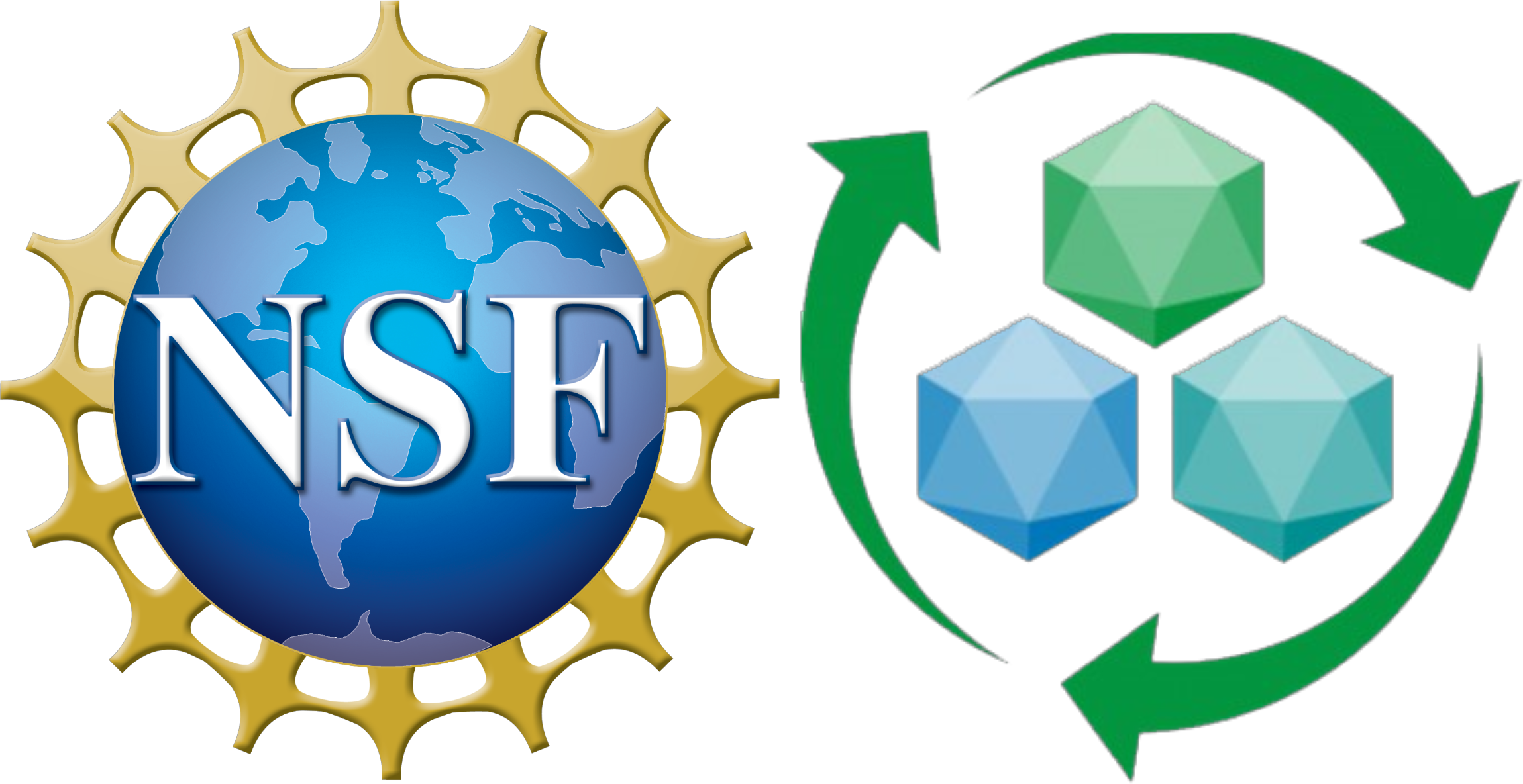News
Invited Talk: Surface Chemistry of Gold Nanorods: Wrapping, Stitching, Exchanging and Coating
Gold nanorods have potential applications as chemical sensing, biological imaging, and photothermal therapeutics. Our laboratory has developed the syntheses of these materials, in controlled size and shape, over the last few years. Surface modification of these nanomaterials is a key step to enable applications. In this talk I will describe our recent efforts to wrap up nanorods with layer-by-layer polyelectrolyte deposition in aqueous solution, in a way that allows for “capture coating” of small molecules at defined distances from the surface; how we can “fix” the surface of the nanomaterials by on-particle polymerization reactions; and how surface ligand exchange and overcoating affects biological properties of these materials.
Poster: Impact of TiO Nanoparticles on Growth, Biofilm Formation, and Flavin Secretion in Shewanella Oneidensis
Understanding of nanoparticle impacts on critical bacteria functions allows us to gain a mechanistic understanding of toxicity and guides us towards design rules for creating safe nanomaterials. Herein and using analytical techniques, biofilm formation, a general bacteria function, and riboflavin secretion, a species-specific function, were monitored in Shewanella oneidensis, a metal reducing bacterium, following exposure to a variety of TiO2 nanoparticle types (synthesized, Aeroxide P25, and T-Eco). TEM images show that dosed nanoparticles are in close proximity to the bacteria but they are not internalized. Using quartz crystal microbalance (QCM), it was revealed that S. oneidensis biofilm formation is slowed in the presence of nanoparticles. Though S. oneidensis grows more slowly in the presence of TiO2 nanoparticles, riboflavin secretion, a function related to the S. oneidensis metal reducing capacity, was increased significantly… Read More »Poster: Impact of TiO Nanoparticles on Growth, Biofilm Formation, and Flavin Secretion in Shewanella Oneidensis
Invited Talk: Nanoparticle Toxicity Assessment in a Bacterial Model
Engineered nanoparticles are found in many everyday products and hold great potential as therapeutic agents. Accordingly, it is critical to consider how engineered nanoparticles interact with physiological and ecological systems. This work focuses on functional assessment of bacterial cell behavior following exposure to Au, nanodiamond, and semiconductor nanoparticles. Functional considerations include biofilm formation, cell delivery of chemical messengers, production of reactive oxygen species, and gene expression, among others. In this new collaborative study, obtained bacterial toxicity results can be compared to those o btained in other model systems (lipid bilayers and the multicellular water flea, Daphnia) to identify common modes of nanoparticle interactions and the resultant effects. The goal of this work is to discover critical nanoparticle features that determine… Read More »Invited Talk: Nanoparticle Toxicity Assessment in a Bacterial Model
CSN at Gordon Research Conference on Environmental Nanotechnology
Scientists from the CSN were invited to give talks and present research posters at the Gordon Research Conference on Environmental Nanotechnology in Stowe, Vermont on June 2-7. Posters Presented by CSN Scientists Title: Fluorescent Nanodiamond as an Inert Tracer for Environmental and Biological Studies Author: Robert Hamers, Chang-Soo Lee, Marco Torelli, Joel Pedersen, Galya Orr, and Franz Geiger Title: Interactions of Funtionalized-Gold Nanoparticles with Supported Lipid Bilayers Author: Thomas Kuech, Stephanie R. Walter, Sam E. Lohse, Julianne Troiano, Catherine J. Murphy, Franz M. Geiger, Robert J. Hamers, and Joel A. Pedersen Invited Talks By CSN Scientists Title: "Tying molecular-level interactions of nanomaterials and organism to population impacts" Speaker: Rebecca Klaper For more information, visit the website for the Gordon Research Conferences through this Link.
CSN Scientist Stephanie Walter of Northwestern University successfully defends her PhD thesis!
Stephanie's thesis focused on understanding the surface chemistry of functional materials and biointerfaces using nonlinear optics, such that knowledge gained at the molecular level can contribute to future efforts to design and control the properties of new materials for improved performances. More specifically, her work determined: How molecular ordering influences device performance in organic electronics. How metal binding interactions with DNA-functionalized surfaces impact molecular structure and biorecognition events in model biosensors. What drives nanomaterial interactions with biointerfaces to better design nanomaterials that are safe and sustainable. Stephanie will be continuing on as a postdoctoral researcher with Professor David Walt at Tufts University! Congratulations Stephanie!
CSN Scientists develop new benchtop reactor for nanoparticles
In a paper just published in ACS Nano, CSN researchers Sam Lohse and his mentor, Catherine Murphy, describe a new benchtop reactor system that can be used for high-throughput functionalization of nanoparticles with different sizes and shapes. In initial tests the reactor has been used to make gram-scale quantities of gold nanospheres and nano-rods in a highly reproducile, automated manner. The reactor design should also be applicable to other types of metallic nanoparticles such as silver and copper. The reactor enables synthesis of large batches of identically functionalized nanoparticles that can then be distributed to other researchers. The new work will enable scientists to replicate one another's work and will enhance our ability to understand how nanoparticles interact with the environment. More information about… Read More »CSN Scientists develop new benchtop reactor for nanoparticles
